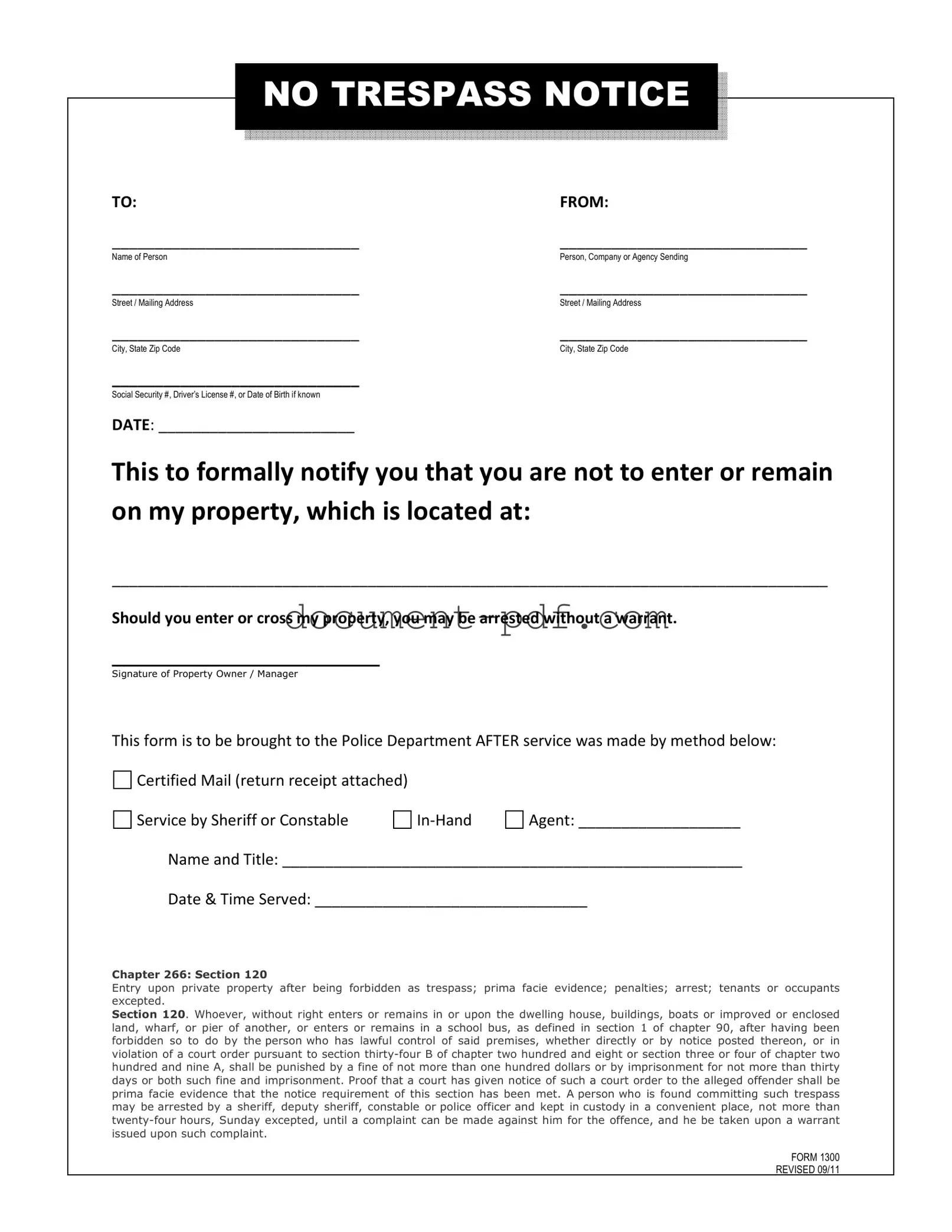A Cease and Desist Letter serves a similar purpose to a No Trespassing Letter by formally requesting that an individual stop a specific action. This document is often used in situations where someone is infringing on another person's rights, such as harassment, copyright infringement, or other unwanted behaviors. The letter clearly outlines the actions that need to stop and may include a warning about potential legal consequences if the behavior continues.
A Trespass Notice is closely related to a No Trespassing Letter but is often used in a more formal legal context. This document is typically issued when someone has already trespassed on a property. It serves as a warning that further unauthorized entry will result in legal action. The Trespass Notice may include details about the previous incidents and a clear statement of the property owner's rights to protect their property.
For those interested in protecting sensitive business information, learning about the Non-disclosure Agreement essentials is crucial. A well-structured Non-disclosure Agreement can safeguard your proprietary data while fostering trust between involved parties.
An Eviction Notice is another document that shares similarities with a No Trespassing Letter, particularly in the context of property rights. This notice is used by landlords to inform tenants that they must vacate the premises. It specifies the reasons for the eviction, which may include non-payment of rent or lease violations. While a No Trespassing Letter addresses unauthorized entry, an Eviction Notice deals with tenants who have legal permission to be on the property but must leave due to specific circumstances.
A Letter of Intent to Sue can also be compared to a No Trespassing Letter in that both documents express a formal stance on a legal matter. This letter is sent to inform an individual or organization that legal action may be taken if a situation is not resolved. It outlines the grievances and provides a timeline for resolution. While a No Trespassing Letter focuses on property access, a Letter of Intent to Sue addresses broader legal disputes.
Lastly, a Demand Letter is similar in that it requests specific actions or resolutions from another party. This document is often used to settle disputes without going to court. It may demand payment for damages, compliance with an agreement, or cessation of harmful actions. Like a No Trespassing Letter, a Demand Letter sets the stage for potential legal action if the recipient fails to comply with the requests made within the letter.

